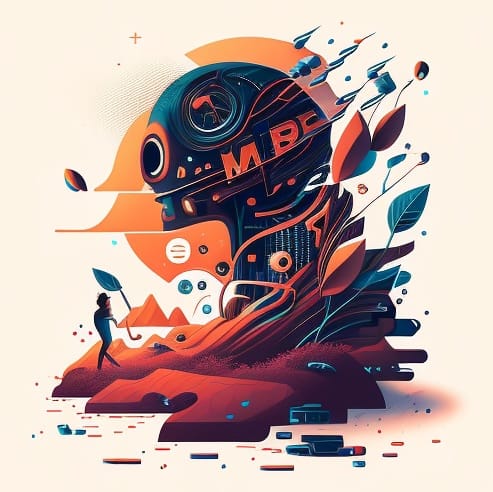ChatGPT Unveiled: Assessing the Potential and Pitfalls of OpenAI's Advanced Chatbot
The Startup Explorer : Discover ChatGPT, OpenAI's advanced chatbot, as we analyse its capabilities, inherent limitations, real-world applications, and implications for users.

A Comprehensive Exploration of ChatGPT's Capabilities, Inherent Limitations, and Real-World Applications
ChatGPT, OpenAI's most recent chatbot offering, has generated quite a stir in the realm of technology. Possessing the ability to perform a myriad of tasks such as crafting poems and lyrics, answering queries, generating essays, and translating text, it demonstrates remarkable versatility. Nevertheless, like any nascent technology, ChatGPT's capabilities are not without constraints. In this article, we shall delve into the advantages and drawbacks of ChatGPT, furnishing a thorough understanding of its potential and limitations.
Advantages
1. Efficiency: ChatGPT exhibits remarkable prowess in swiftly and accurately processing voluminous amounts of data. This feature proves to be particularly advantageous for industries reliant on rapid data processing, such as finance or marketing.
2. Natural Language Processing: ChatGPT demonstrates an impressive ability to comprehend and process natural language. As a result, it can engage with users in a manner that feels instinctive and strikingly human-like.
3. Personalisation: ChatGPT can be trained to deliver tailored responses based on users' preferences and interests. This aspect proves to be especially valuable for businesses seeking to augment customer experience.
4. Translation Capabilities: ChatGPT can adeptly translate text from one language to another with speed and precision. This function is particularly beneficial for organisations operating on an international scale.
Drawbacks
1. Limited Knowledge: Although ChatGPT has access to a wealth of information, its knowledge repository is not as extensive as that of humans. Consequently, it might be incapable of accurately answering certain questions or providing comprehensive information on specific subjects.
2. Non-sensical Data: ChatGPT may generate irrelevant or nonsensical data in response to user queries. Its answers could lack emotional nuance, sarcasm, or humour, and may contain extraneous or unrelated information.
3. Absence of Expression: As a machine, ChatGPT is devoid of expressive language. It fails to convey emotions in its responses, and its language might appear mechanical, lacking in tone and inflection.
4. Hallucinations: ChatGPT is susceptible to producing false information or adding non-existent details to content. For instance, it might fabricate examples to elucidate an article or include information that is neither relevant nor accurate.
To better understand the limitations of ChatGPT, it is important to delve into the nature of its underlying technology. ChatGPT is based on OpenAI's GPT (Generative Pre-trained Transformer) architecture, which utilises deep learning techniques to process and generate human-like text. Despite its impressive capabilities, the technology is inherently constrained by certain factors:
1. Data-Driven Learning: ChatGPT learns from the vast amounts of text data fed into it during the training process. However, this data is predominantly historical, meaning that ChatGPT's knowledge is limited to the information available up until its last training update. Consequently, it may lack understanding of recent developments or events.
2. Bias in Training Data: The quality of ChatGPT's responses depends on the data it has been trained on. If the training data contains biases, inaccuracies, or unbalanced perspectives, these shortcomings may be reflected in the chatbot's responses. OpenAI is continuously working to mitigate such biases, but completely eliminating them remains a challenge.
3. Lack of Context Awareness: While ChatGPT has made significant strides in understanding natural language, it may still struggle with context-specific nuances or complex user inputs. It lacks the ability to infer meaning from incomplete or ambiguous information as effectively as humans can, which may result in less accurate or relevant responses.
4. Absence of Common Sense Reasoning: ChatGPT, like most AI language models, struggles with common sense reasoning. While it can provide text-based answers, it may not always understand the underlying logic or connections between concepts. This limitation can lead to nonsensical or irrelevant responses, despite the model's impressive language generation capabilities.
Understanding these inherent limitations can help users manage their expectations when engaging with ChatGPT, and encourage developers to continuously refine the technology to overcome these challenges.
ChatGPT is an immensely potent language processing tool, boasting a variety of potential applications. Its capabilities include swift data processing, natural language understanding, and the provision of personalised responses. Nonetheless, it is not without its limitations, such as restricted knowledge, the generation of non-sensical data, an absence of expression, and the tendency to hallucinate. As with any technology, comprehending its advantages and drawbacks is paramount before utilising it for business or personal purposes. Ultimately, the effectiveness of ChatGPT hinges on its usage and the context in which it is employed.